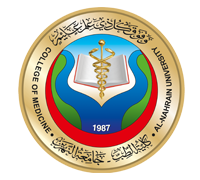|
Vol. 8 Issue 2 April - June / 2010
Published on website | Date : 2016-05-19 10:57:37
MORPHOMETRIC ANALYSIS OF ODONTOID PROCESS.Hayder hammadi abdulameerAbstractBackground: The axis vertebra is the strongest cervical vertebrae; the characteristic feature of it is the presence of strong bony element, the dens (odontoid process). Several investigations have shown its relation with certain congenital anomalies.
Objective: The aim of this study was to evaluate the value of some morphometric parameters measured from the odontoid process of the axis vertebra to judge the degree of retroflexion of the odontoid process in relation to the morphological architecture. Method: 30 randomly selected dry bones of adult second cervical vertebrae were used. These vertebrae were examined grossly and morphometrically, and the data obtained were analyzed by using global lab image/2 computer program. Results: Morphometric results of this study showed that the retroflexion of the dens should be related to dorsal deviation, if the anteroposterior distance of the dens is fixed. The thicker anteroposterior dens is longer, wider, but less dorsally deviated. Conclusion: We may be able to consider the dorsally deviated dens and the anteroposterior thickness of the dens as indicator for the degree of retroflexion of the dens. The study may elaborate the possibility of using the above parameters as markers for the retroflexion of dens in cases of Chiari I malformation. Thus a preliminary diagnosis could be achieved. Key words: morphometry, dens, congenital anomaly. Full-text |
Some tools below are only available to our subscribers or users with an online account |
 |
Please wait until the current process completes ... |



